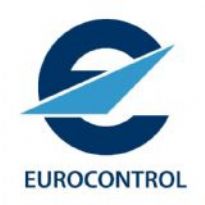The aviation community comes together to discuss the Future Sky Safety research programme

This four-year Future Sky Safety research programme sponsored by the European Commission held its first public conference at EUROCONTROL HQ on 8-9 March, attended by a comprehensive assembly of industry, including airframe manufacturers, airline and airport operators, regulators, and research & academic organisations, to hear the preliminary outcomes of the work of the 33 contributing partners.
The conference opened with an address by Daniele Violato, Project Manager Horizon 2020 Aviation Research at the European Commission's Innovation and Networks Executive Agency (INEA), who outlined the extent of the funding for research being made available from the European Commission. Technical presentations followed on hydroplaning, runway excursions, big data analysis of runway occupancy, and deriving a bigger picture of aviation safety from collated safety data repositories. Discussions on the latter topic examined where new safety indicators might come from, and how best to capitalise on existing data repositories. The final session of Day 1 focused on the human side of safety: safety culture and safety intelligence. In this regard, Future Sky has conducted the largest safety culture survey to date in the aviation industry, with over 7,000 pilots taking part in the survey that has revealed an overall positive view of safety culture in the cockpit. Two further presentations sharing sensitive safety data were well received and reminded a largely technical audience that operational safety, no matter how much technology exists, is in the end delivered by people.
Day 2 of the conference started by taking a very physical view of safety, which is quite a departure from the areas of data and SMS systems normally considered at safety conferences. Five presentations were made on mitigating the risk of fire, smoke and fumes in aircraft cabins. Many partners are looking at developing new skins for aircraft which can be massively complex multi-layered composites, requiring exhaustive testing to examine what happens in the event of a fire; how new skins protect against heat, how they propagate temperature, break down and what then happens to those secondary products at aircraft fire-type temperatures. This was followed by more work on human-centred safety, with a presentation from NASA on the Human Performance Envelope (HPE), a subject first explored by a Ph.D student at EUROCONTROL. This EUROCONTROL research work is now being deployed at NASA and applied to their Trajectory-based Operations concept of air traffic control. The research has also been applied to the cockpit environment within the scope of Future Sky. Pilots were put through their paces in a complex set of simulations, and measures were collected to explore and categorise the HPE using physiological measures of performance such as heart rate and pupil diameter.
The conference concluded with an address by Frederik Abbink, who has made a long career in European research and remains influential in European aviation research strategy. Under the guiding hand of what is now Advisory Council for Aeronautical Research in Europe (ACARE), funding for aviation research has increased from 2 million (ECU) in the early 1990s to more than 2.9 billion euro today, of which a small but not insignificant part of which is allocated to SESAR research and EUROCONTROL programmes.